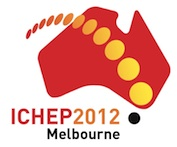Speaker
Dr
Tamaki Yoshioka
(Kyushu University (JP))
Description
The CALICE collaboration has developed highly granular calorimeter prototypes to evaluate technologies for experiments at a future lepton collider, and measured their performance in test beams. One important use of these data is the validation of the physics models in GEANT4, especially those related to hadronic showers. This validation is crucial if Monte Carlo simulations are to be used to optimise the design of detectors for ILC or CLIC.
In this talk we discuss several features of showers recorded in the CALICE calorimeters using analogue readout. These include both a Si-W electromagnetic calorimeter, a tungsten ECAL with scintillator strip readout, and a hadronic calorimeter instrumented with scintillator pads and using either iron or tungsten absorbers. The performance of these different technologies are compared. A common feature of all these designs is their high spatial resolution, optimised for particle flow reconstrction of jets. This granularity permits the investigation of shower shapes in unprecedented detail, and the resolution of detailed substructure within the shower, such as track segments. Many of these features present new challenges to the simulation models. Furthermore, the high level of detail recorded within the showers can be exploited in the form of "software compensation". A variety of techniques can be used to discriminate between the different components within showers and hence to weight them differently so as to improve the energy resolution. We also report on recent tests of the time-structure of hadronic showers in a tungsten calorimeter - a topic of especial interest for a CLIC detector where accurate time stamping is required.
Primary author
Dr
Tamaki Yoshioka
(Kyushu University (JP))




